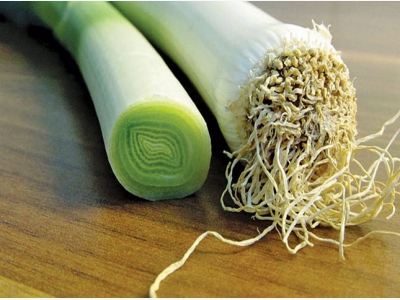Growing leeks in your garden

No garden is complete without this underrated and versatile vegetable, says Bill Kerr.
Rather than forming a tight bulb like the onion, the leek produces a long cylinder of bundled leaf sheaths. Photo: Björn König
Most people associate leeks with soup. For this reason, many of my farmer clients grow them only for inclusion in winter soup packs. But leeks have many other uses.
The leek is a highly nutritious vegetable. Although belonging to the Allium genus, which includes onions and garlic, the leek isn’t as pungent as these, hence its versatility.
One way I use leeks is to trim off the roots, remove the leaves and add the shank to the roasting pan when the roast is about half done. It makes a delicious addition to the other vegetables.
Leeks are easy to grow, and the harvest period can be extended for many months, from baby leeks (used in cooking and salads) to fully grown plants, which can be kept in that state for a long time.
Plant with flowers
Leeks can be planted in clusters in a formal flower garden, where they certainly don’t look out of place. Harvest the clusters by thinning them out or taking leeks from the outer edges when required.
By planting them in this way, you make more room in your vegetable patch.
Leeks can be seeded directly, but due to their slow initial development, it is better to sow them in seedbeds and transplant the seedlings when the stems have reached pencil thickness.
To ensure very white shanks, plant the seedlings extra deep. Alternatively, plant them in furrows, and, as they grow, gradually fill in the furrow when weeding. You can even ridge them up afterwards to further lengthen the shanks.
Leeks take about two months from seeding until ready for transplanting. From there, the time to harvest depends at what stage you start eating them.
They take several months to become fully grown and, as mentioned, they can be used for many months thereafter.
Apart from cutworms, which are a common threat to all young plants, the only likely pest is thrips. I never have to spray for these, however, as nature seems to keep their numbers in check.
If you live in a cool area, you can sow once in late winter and follow up with another sowing in December.
If you are in a subtropical area, sow in January. Leeks do not do well in a subtropical summer.
Related news
 No-till: increasing soil organic content
No-till: increasing soil organic content With no-till farming, you need to try to gradually increase the organic content of the soil.
 The basics of maize production
The basics of maize production Also known as corn, maize was first domesticated in southern Mexico nearly 10 000 years ago. Many varieties have been bred to suit a range of conditions.
 Getting ready to plant cucurbits
Getting ready to plant cucurbits Before planting a land to any of the cucurbits, you should kill off all broad-leaved weeds nearby, preferably well beforehand.